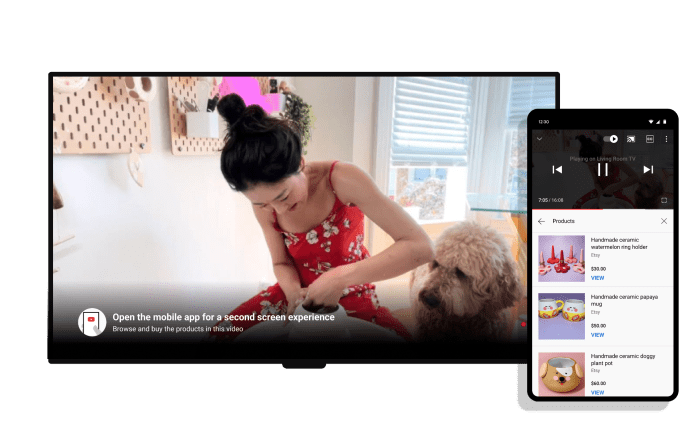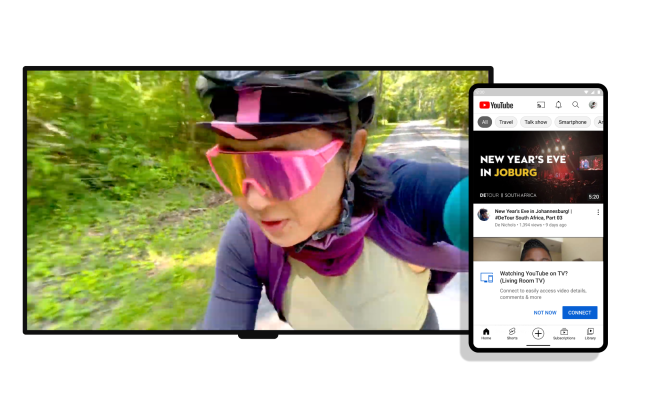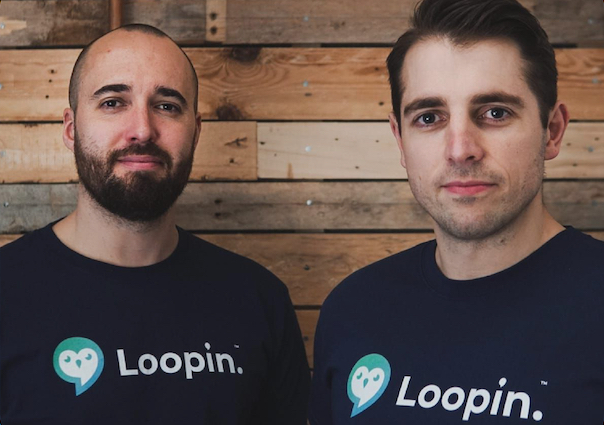YouTube’s mobile app can now sync to your TV without casting for a ‘second screen’ experience – TechCrunch
YouTube is improving its app’s experience for those who watch videos via their TVs, the company announced today. After observing that many YouTube users were already using the mobile app and engaging with videos as they watched on the big screen, the company is now introducing a new feature that allows users to connect their TV to their iOS or Android device in order to sync videos between devices. This makes it easier for users to engage with other YouTube features, like comments, the like button, or creator support, among other things, YouTube says.
The company pointed to research that found that over 80% of people claimed to use another digital device while watching TV as driving this product decision. It then looked at how people were using its own YouTube mobile app, and saw that many would open the video while watching YouTube on their TV and would engage with the content on their device by liking, subscribing, and more.
YouTube said it saw the opportunity to tap into this user behavior to address the challenges it has faced in designing a big-screen experience. Over the years, its designers have struggled with making the TV app easier to use, given that remote controls are difficult to navigate with, most TVs don’t have built-in web browsers, and there’s often less space to work with — especially when users are watching full-screen videos.
The new mobile feature helps to solve some of these challenges as it allows users to turn to their mobile app instead to synchronize their phone to the TV. After opening the YouTube app on the TV, they can then open the mobile app on their phone and click “Connect” on the prompt that appears to sync up their viewing.
This is sort of the reverse of the typical “casting” experience, where users would tap the Cast icon in the YouTube mobile app to connect their phone to the TV. YouTube confirmed the new feature doesn’t rely on casting protocols, like Google Cast or DIAL, in order to work. Instead, users just stay signed into their YouTube account on both devices — there’s no technical complexity to the experience for the end user, a spokesperson said.
Once synchronized via the new feature, users can then directly interact with the video from their phone while they watch, which YouTube says makes it easier to read video descriptions, leave comments, share a video with a friend, or use other features to support creators, like Super Chat or channel memberships, among other things.
But this feature also lays the groundwork for other experiences YouTube is building, including e-commerce. The company says it’s already testing new designs for its video watch page that would make it easier for users to browse and shop for products seen in videos directly from the big screen. These designs will help to guide users to their mobile device when they’re ready to buy.
In this case, a message may appear on the big screen that suggests users open the mobile app for a “second screen experience.” When they do so, they’ll see a list of products featured in the video which they can then view with a tap.

Image Credits: YouTube shopping experience
YouTube has signaled its interest in online shopping for some time, having launched livestream shopping last year, following other enhancements like merch shelves and shoppable ads, for example. At this year’s Brandcast event in May, YouTube also said it would soon roll out more livestream shopping features, including co-streams where creators could go live together, and redirects that send a creator’s audience to a brand’s channel.
According to a statement earlier this year from YouTube Chief Product Officer, Neal Mohan, e-commerce is a major area of focus for YouTube.
Left unsaid is the credible threat that TikTok is having on this market. TikTok has been sending users directly to other shopping platforms like Shopify or Amazon, driving millions in sales — with no Google sites being used along the way.
“One of the most anticipated opportunities we’ll bring to our brands this year is Shopping,” Mohan had written. “This new experience taps into the deep trust creators have built with their communities to help our partners expand into the booming world of e-commerce. We’re thinking about shoppable videos, Live Shopping, and, more broadly, how shopping appears across the app,” the post read.
Another benefit to syncing the app to the TV platform directly is that it could give YouTube more control over critical aspects of the user experience which it can’t always dictate on third-party TV platforms. The company, for instance, got into a dispute with Roku over the distribution of its YouTube and YouTube TV apps on the streaming media device maker’s platform, because YouTube wanted to control things like how search results appeared or how voice search functioned. In prior years, it had issues with Amazon as well, before finally coming to an agreement.
YouTube says the new feature will work on all smart and connected TVs that have the latest YouTube app. It will also require that users are signed into YouTube on both the TV app and in the mobile version, and both are connected to the internet.
The feature will roll out across all platforms with the latest YouTube app over the next few weeks, YouTube says.




